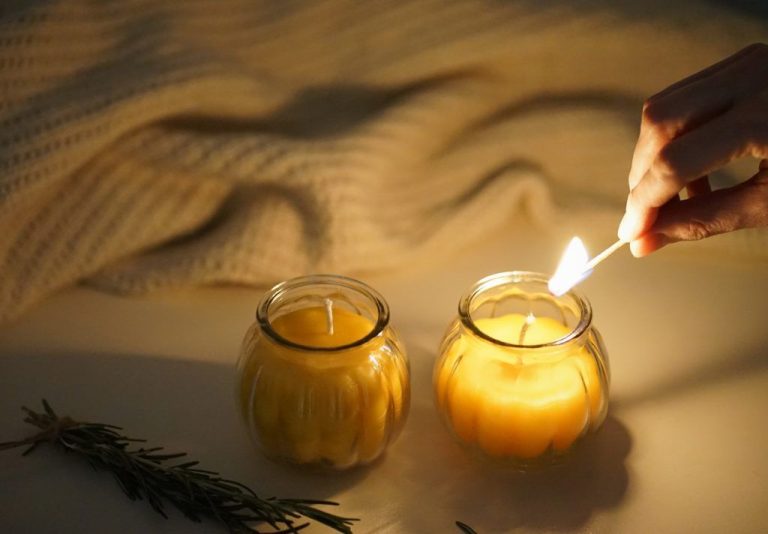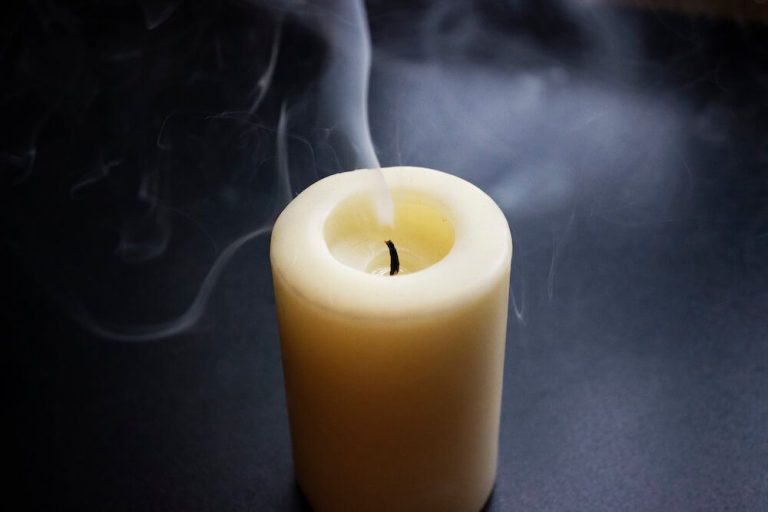Is Paraffin Wax And Candle Wax The Same?
Paraffin wax and candle wax are often used interchangeably, but there are some key differences between the two. Paraffin wax refers specifically to a type of wax made from petroleum, coal, or oil shale. Candle wax is a more general term that encompasses various types of waxes used to make candles, including paraffin. While paraffin wax is commonly used in candle making, there are also other types of waxes like soy, beeswax, and palm wax that can be used. This article will examine the differences between paraffin wax and other candle waxes, looking at how they are produced, their properties, and uses in candle making. We’ll also explore the pros and cons of paraffin verses other waxes to help understand the key distinctions between them.
Definition of Paraffin Wax
Paraffin wax is a soft, colorless, tasteless, and odorless solid derived from petroleum, coal, or oil shale. It consists of saturated hydrocarbons, with the chemical formula CnH2n+2. Paraffin wax is a mix of heavy and light hydrocarbon molecules ranging from C21 to C40. Some key properties of paraffin wax include:
- It has a melting point between 47°C and 64°C (116°F and 147°F).
- It is insoluble in water but soluble in ether, benzene, and certain esters.
- It is thermoplastic, meaning it softens when heated and hardens when cooled.
- It is flexible and can be bent or stretched without breaking.
- It is moisture-resistant and chemically inert.
Paraffin wax has many common uses due to its properties. It is often used for:[1]
- Candles
- Wax paper
- Crayons
- Cosmetics
- Polishes
- Lubricants
- Coatings
- As a phase change material for heat storage
Types of Candle Waxes
There are several main types of waxes that are commonly used to make candles, including:
Paraffin Wax
Paraffin wax is the most common candle wax. As the Craftybase article describes, it is a byproduct of petroleum refining and made from fossil fuels. Paraffin wax is highly refined and has an oil content of less than 0.5%. It is hard, brittle, and melts at relatively low temperatures. Paraffin candles burn slowly and cleanly, with little soot or smoke.
Soy Wax
Soy wax is made from hydrogenated soybean oil. As explained in the Craftybase overview, it is a renewable and biodegradable wax made from plants. Soy wax melts at a slightly lower temperature than paraffin. It produces a soft sheen on candles and is commonly blended with paraffin or other waxes.
Beeswax

Beeswax is a natural wax produced by honey bees. The TLC Candle Co article notes it has a sweet, honey-like scent. Beeswax candles burn brighter and slower than paraffin. However, beeswax is expensive and can be prone to melting in warm environments.
Palm Wax
As covered in the TLC Candle Co overview, palm wax comes from the fruit of palm trees. It is creamy, hard, and brittle. Palm wax helps candles hold their shape and burn cleanly. However, harvesting palm oil raises environmental concerns in some regions.
Coconut Wax
Coconut wax comes from coconut oil. The Craftybase piece explains it has a high oil content compared to paraffin, so it can burn cleaner. Coconut wax candles have a soft finish and solid scent throw. However, the wax can be prone to melting in high temperatures.
Paraffin Wax Uses in Candles
Paraffin wax is commonly used to make candles because of its ideal properties for candle making. When paraffin wax is refined, it creates an odorless and colorless wax that has a melting point between 47°C and 64°C (117°F to 147°F), which is within the ideal temperature range for candle making (Source: https://www.chemicaliran.com/paraffin-wax-uses-paraffin-wax-applications/). The wax burns cleanly, producing minimal soot or smoke. This makes paraffin an excellent choice for candle making.
Paraffin wax has the ability to hold high concentrations of oil-based fragrance, allowing for strongly scented candles. It forms a plastic crystal structure when cooled that provides a smooth finish and texture, ideal for molded and poured candles. Paraffin’s high melting point allows the candles to retain their shape in warmer environments (Source: https://www.chemicaliran.com/tag/paraffin-wax-use-in-candles/). These properties have made paraffin the predominant wax used for candle making worldwide.
Differences Between Paraffin and Other Candle Waxes
Paraffin wax has some key differences when compared to other common candlemaking waxes like soy wax and beeswax.
Paraffin wax is derived from petroleum, while soy wax is made from soybeans and beeswax comes directly from honeybee hives. In terms of performance, paraffin wax candles typically burn longer and brighter than soy or beeswax candles. Paraffin wax is also easier to dye and accepts fragrance oils better than natural waxes. However, there are some downsides to paraffin – it produces more soot as it burns and some find the scent unpleasant. Paraffin is also not biodegradable like soy and beeswax.
Soy wax is made from soybeans so it is a renewable and sustainable resource. Soy candles burn cleaner than paraffin with less soot. The natural scent of soy wax is milder and more pleasing. However, soy wax is not as durable as paraffin and doesn’t hold fragrance as well. Soy also cannot be blended with as many dye colors as paraffin.
Beeswax produces a brighter flame and is compatible with essential oils for fragrance. It is completely biodegradable and renewable. However, beeswax is expensive compared to paraffin and soy. It is also difficult to dye beeswax deep colors. Beeswax candles take a long time to cure and can be prone to frosting.
In summary, paraffin wax has excellent burning properties but it is not environmentally friendly. Soy and beeswax are more natural options, but they have some limitations when it comes to performance and coloring.
How Candles Are Made
The main steps in making a standard candle are:
1. Melting the wax – The wax, often paraffin wax, is melted in large vats or pots to liquefy it and make it easy to work with. The wax is heated to temperatures between 130 to 180 degrees Fahrenheit.
2. Adding color and fragrance – Once the wax is melted, dye and fragrance oils are added and mixed in to give the candle its color and scent. The amount of dye and fragrance varies based on the type of candle.
3. Prepping the wick – The wicks are soaked in a solution that makes them rigid to help hold them straight when embedded in the wax. Wicks come in different thicknesses.
4. Pouring into molds – The melted wax is carefully poured into molds of various shapes and sizes. The wick is placed inside the mold before pouring.
5. Cooling and setting – The poured wax candles are allowed to completely cool and set, which can take up to 48 hours. Cooling allows the crystals in the wax to form giving the candle structure.
6. Removing from molds – Once cooled and hardened, the candles are removed from the molds and trimmed of any excess wax or wick.
Paraffin wax plays a key role in candle making. Its low melting point (around 130F) makes it easy to melt and work with. Paraffin wax also gives a smooth appearance and burn to the candle. The hardness of paraffin allows candles to hold their shape and provides rigidity to embed wicks. Its high oil content produces a bright flame when burned. Paraffin is abundant and cost effective, making it an ideal candle wax.
Pros and Cons of Paraffin Candles
Paraffin wax candles have both advantages and disadvantages compared to other candle waxes. Here are some of the key pros and cons to consider:
Pros:
- Affordable – Paraffin wax is inexpensive, keeping costs low.
- Easy to work with – Paraffin wax has a low melting point, making it easy to shape and pour into molds.
- Smokeless and odorless – Paraffin wax burns cleanly without producing smoke or scent.
- Good burn time – Properly wicked paraffin candles can burn evenly for many hours.
- Variety of looks – Paraffin can be colored, scented, and molded into many shapes.
Cons:
- Not eco-friendly – Paraffin is a petroleum byproduct and not biodegradable or renewable.
- Toxic emissions – Paraffin candles release some toxic chemicals like toluene and benzene when burned.
- Soot – Lower quality paraffin can produce more soot than beeswax or soy candles.
- Not natural – Those looking for all-natural candle options would avoid paraffin.
Overall, paraffin wax strikes a good balance of performance and affordability for most candle needs. But for some, the environmental and potential health impacts are a concern. See “Alternatives to Paraffin Candles” for other natural wax options.
Sources:
Pros and Cons of Paraffin Candles. (2023). Retrieved February 10, 2023, from https://www.thespruce.com/pros-and-cons-of-paraffin-candles-4705386.
Alternatives to Paraffin Candles
While paraffin wax remains the most popular and widely available type of candle wax, some concerns over its use have prompted interest in alternative waxes. These can offer benefits like being more environmentally friendly or emitting less smoke when burned. Some alternatives to paraffin wax used in candle making include:
- Soy wax – Made from soybeans, this renewable and biodegradable wax burns cleanly. It does not release toxins and is often blended with other waxes. Soy candles require proper care to avoid issues like frosting.
- Beeswax – Natural, non-toxic beeswax makes long-burning candles though the wax can be expensive. Beeswax candles have a subtle sweet honey scent.
- Palm wax – Derived from palm oil, this vegan wax has good scent throw and clean burn though supply chain issues exist. Its hardness requires blending with other waxes.
- Coconut wax – Made from coconut oil, this wax provides excellent scent throw and clean burn. However, it can be prone to oil sweating and melting in warm environments.
- Gel wax – A mixture of mineral oil and polymer resins, gel wax allows vivid colors and designs not possible with other waxes. But it can burn less cleanly with more soot.
There are pros and cons to each of these alternative candle waxes. Factors like performance, environmental impact, scent properties, and cost may help determine which is best for a particular use. Many candle makers use blends of different waxes to capitalize on their strengths.
Safety Considerations
While paraffin candles are commonly used, there are some safety concerns to be aware of. According to the New York Times, paraffin wax is made from petroleum byproducts, so burning paraffin candles can release potentially harmful chemicals like toluene and benzene into the air [1]. One study suggests that frequent use of paraffin candles could cause dangerous air pollution over time [2]. However, more research is needed on the long-term health effects.
Some people may experience irritation or allergic reactions from fragrance oils added to scented candles. Candles with synthetic fragrances can bother those with asthma, allergies, or chemical sensitivities. It’s best to choose unscented candles or candles with natural essential oils if you have these conditions.
In general, burning any candles produces some potentially harmful substances like carbon monoxide and fine particulate matter, especially if ventilation is poor. It’s recommended to limit candle burning to a few hours at a time, keep them away from drafty areas, trim wicks to 1⁄4 inch before lighting, and never leave burning candles unattended [3]. Practicing candle safety can help minimize risks.
Conclusion
In summary, while paraffin wax is commonly used to make candles, not all candle waxes are paraffin-based. Paraffin wax is derived from petroleum and is the most widely used candle wax due to its low cost and easy availability. However, there are other natural waxes that can be used in candle making as well, such as beeswax, soy wax, and palm wax.
The key differences between paraffin wax and other candle waxes are that paraffin is not from a sustainable source, can release more soot and smoke when burned, and does not hold fragrance as well. Alternative waxes like soy and beeswax have gained popularity for their natural origins and perceived health benefits over paraffin candles.
In conclusion, while paraffin wax and candle wax often refer to the same thing, not all candle waxes are created equal. Paraffin wax is the most common, but it is not the only option for candle making. When choosing a candle, considerations include the wax type, wick quality, fragrance, and your preferences on factors like smoke emissions, scent throw, and sustainability.




